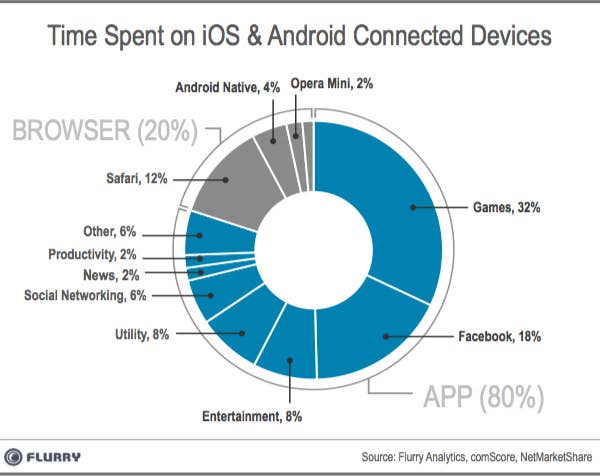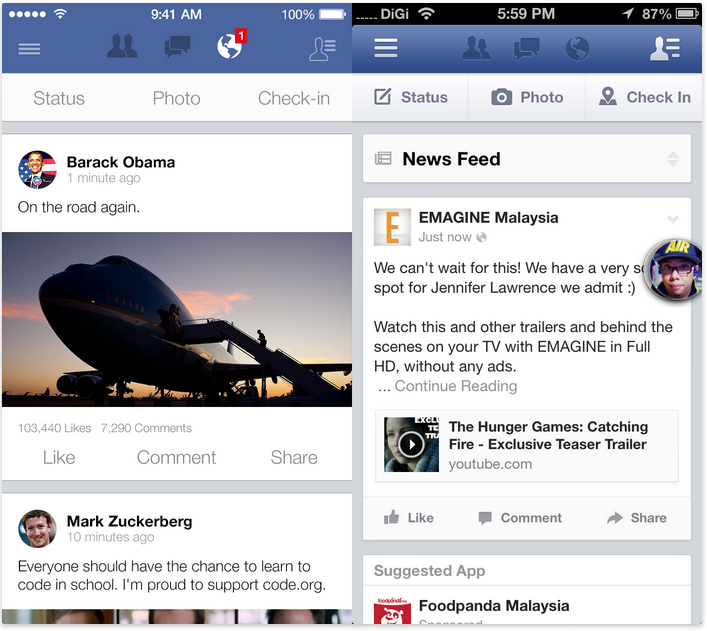
Right now, thousands of developers (and plenty of journalists) are using an early version of iOS 7, Apple's next major update to its five-year-old mobile OS. Reviews have been written, and verdicts have been reached. Everyone who would have an opinion on a new iOS update has already rendered one, and published it online.
Even though it won't be available to the general public until September, when the next iPhone comes out, the discussion about what iOS 7 is, how it feels, and whether or not it's a good thing feels almost over.
This, however, does not comport with reality. iOS 7 beta testers have experienced, at best, a framework — they've been given a preview. They've used a new homescreen, a new lockscreen, a new app switcher, a new mail app, a new texting app and a new browser. Those pieces account for a small part of how people actually use their phones. A Flurry report from earlier this year puts these pieces at well less than half of a typical users' experience:

Using iOS 7 today is like using iOS 6 with a skin: some major pieces look and feel different, but the heart of the experience — third-party apps — are exactly the same. Facebook, which eats up an incredible 18% of smartphone users' attention, still looks and works like an iOS 6 app. So do Twitter, Instagram, Pandora, Tumblr, and Yelp. Apps in all the categories accounted for above, excluding "Games," will be subject to fairly substantial changes before the next iPhone is released to the public. There's even a Tumblr devoted to imagining what they'll look like:

In some cases the changes will be stylistic; in others, they'll be deep and functional. Look at the default iOS apps for guidance: Mail is like a whole new app, while the SMS interface remains functionally similar. Some will take advantage of the new multitasking API, for example.
In either case, the redesigns will change user experience substantially, and require a lot of work. So much so that some app designers have floated the idea that developers may need to charge for the updates.
As any developer knows, software doesn't magically grow on trees. Significant reworks of existing apps can represent hundreds of hours of development time and depending on the complexity of the apps in question, require much more than simply updating graphics. Taking full advantage of new APIs, designing new interactions and more can represent a healthy investment, time is money after all. At what point in the update process does a developer decide she needs to charge for it?This may seem like a minor point to make, but consider this: when millions of people use iOS 7 for the first time, their experience will be far more extreme than that of the typical reviewer, developer, or dev-account-piggybacker. The jump from iOS 6 to iOS 7 will be a much larger one for the person on the street than it was for the critics who reacted so severely anyway — the ones who called it brilliant, the ones who called it terrible, the ones who just didn't get it. Joe iPhone User will turn on his iPhone 5S to find not just a new OS, but a homescreen full of completely overhauled apps.
The true reveal, then, hasn't happened yet. Sure, we know what it might look like, but we don't yet know what iOS 7 means for Apple, or for Apple users. Everything up until that point is a guess.
